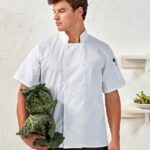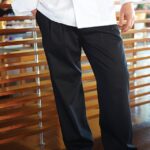Starting a successful business in the hospitality sector calls for getting the right hospitality supplies from the very beginning. One of the most versatile items to get is the uniforms for chefs, especially if you’re running a restaurant. Not only do they give your staff an attractive and professional look, but also create a sense of unity among the team.
Your kitchen crew should always look smart, professional, and representative of your business. But uniforms for a chef are more than just a fashion statement. Investing in the right chef apparel will keep your staff protected from some kitchen hazards. After all, chefs typically work behind the scenes and as such, their uniforms are donned for health, hygiene, and safety.
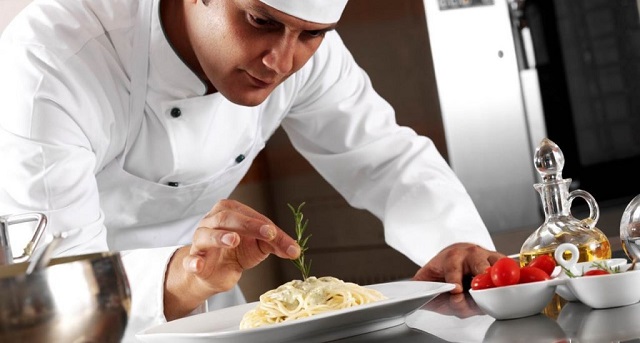
Choosing the Best Chef Apparel: What to Look for?
Chefs work in a fast-paced atmosphere, making it challenging to keep a clean and flawless appearance throughout the day. Therefore, shop for comfortable and highly functional chef uniforms designed for the fast-paced hospitality industry. To make the purchase for the perfect fit much more straightforward, here are some top factors to consider before you hit the shops or the ‘order now’ button.
Uniform Parts
Each part of a chef’s uniform serves a certain function. Even if you aren’t required to wear all parts of the ensemble it will still serve the purpose it was designed for. Each field of service has a different uniform, but all have some common parts that make up the whole, including:
Chef’s Aprons
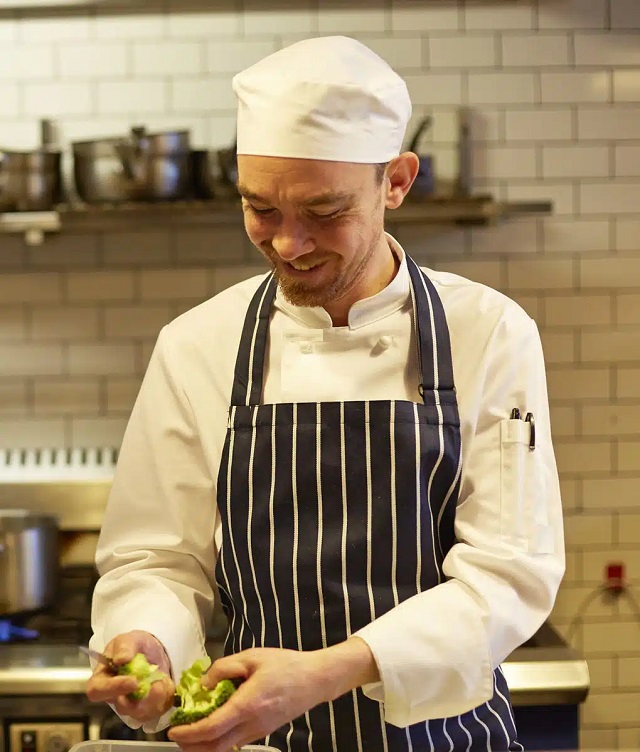
The Chef Apron is an integral part of any chefwear. It provides an additional barrier against hot splashes, heated foods, and other kitchen hazards. Chefs will sometimes wear aprons instead of chef’s jackets, or even an apron over the chef’s jacket. Some restaurants want to coordinate their chef clothing with the front of the house, but others choose to stick to traditional trends like checkerboard prints. There are many styles to pick from, so look for long-lasting, practical solutions.
For instance, bibs have an upper bib and a lower panel to protect the top and bottom, and they fasten at the neck and waist. On the other hand, waist aprons are ideal for waiter and waitress service since they tighten around the waist without a bib. Brief Bistro styles are short, with a pocket and a tie at the back. Long Restaurant aprons are ankle-length with a tie at the back. Money Pouches are mid-length waist aprons that fasten at the rear. These aprons have a built-in zip pocket to keep your tips safe.
Chef’s Jackets
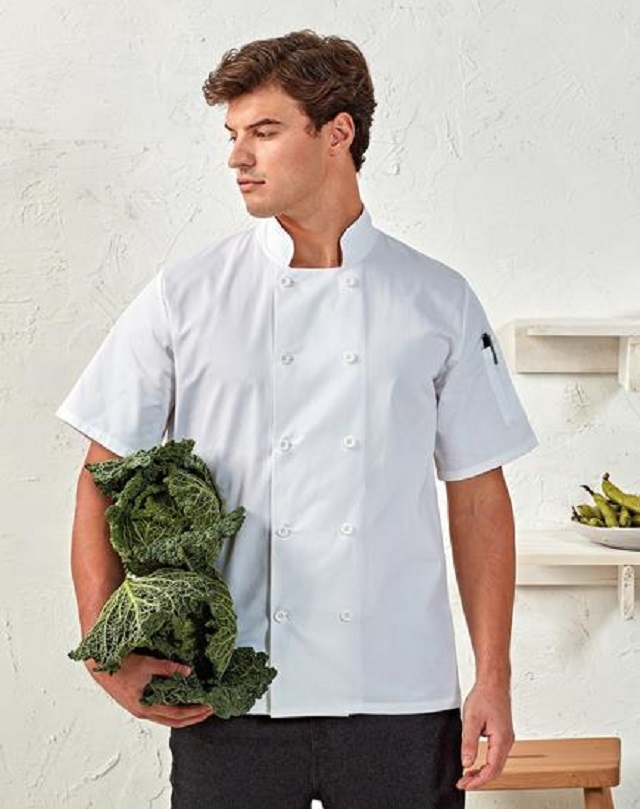
Chef jackets are an essential component of chef uniforms as well. You’re protected from hot spills, splatters, burns, and other cooking catastrophes because your chef jacket is traditionally double-breasted. If you need to cover stains or spills, the design of your chef jacket allows you to unbutton a flap and switch to a clean front. Moreover, they feature long sleeves to protect your arms from burns, splatters, and scalding steam.
Chef’s Pants
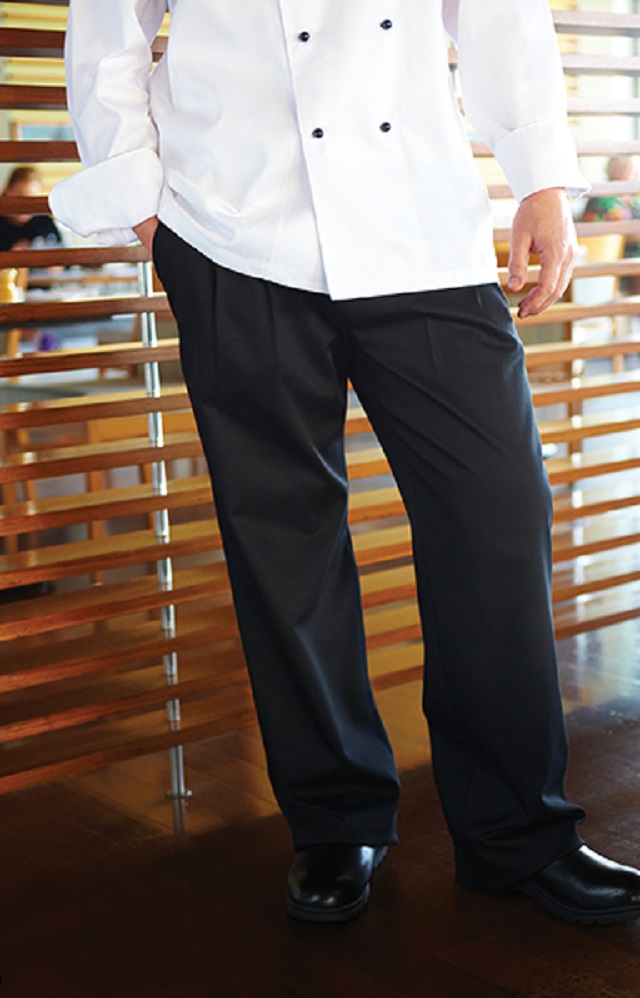
Chef pants are frequently baggy, with elastic waistbands and unusual patterns, and are very necessary for protecting your staff. Long pants are designed to protect your legs from spills, splashes, and burns in hot culinary environments. Their roomy design prevents hot meals and beverages from coming into contact with your skin. Cuffing the bottom of your pants is never a good idea since it traps scalding foods and liquids. The waistband is necessary for quick removal.
Footwear
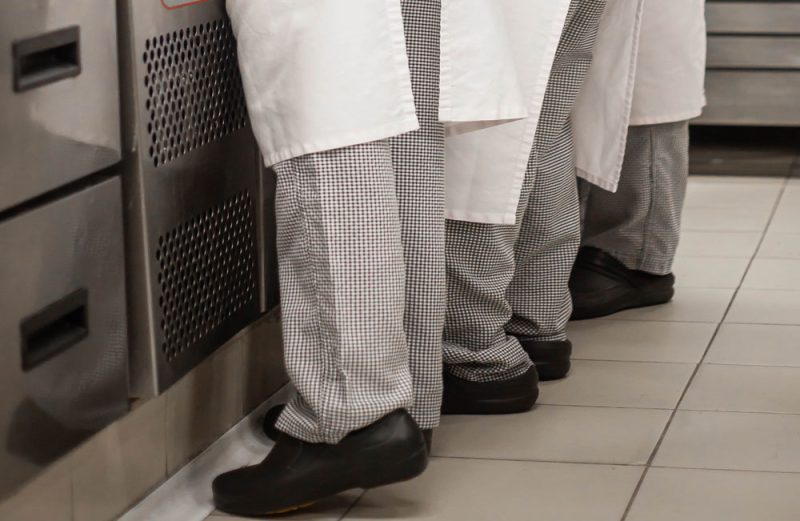
A pair of sturdy and comfortable, anti-slip chef shoes is a must-have. Wearing sandals, open shoes, tennis shoes, or any other type of shoe increases your chances of being burned or harmed by falling blades. In addition, certain shoe brands are designed specifically for chefs who are on their feet for extended periods.
Material Selection
Cotton is the preferred material for any good chef attire, particularly the jacket. It is breathable and helps to keep the body warm. The material also provides additional protection against hot liquid splashes. Jackets typically include buttons, which should be made of knotted cloth. Please avoid using metal or plastic buttons since they can break off, which is a huge risk in any cooking situation. Cloth buttons that have been knotted will not flake and are also easy to undo.
However, the perfect uniform for a chef does not have to be all cotton. It could be a poly-cotton blend of polyester and cotton, which provides both breathability and durability. Poly-cotton blends do not experience shrinkage, unlike pure cotton material. They also dry rapidly and are wrinkle-resistant.
Functionality
In terms of functionality, the Toque Blanche is the most distinguishing characteristic of a chef’s uniform. It denotes the chef’s status in the kitchen while also serving a functional purpose by preventing hair from falling into the meal while it is being prepared. Some toques are adjustable, allowing them to accommodate all head sizes comfortably. Pockets, where you may put small tools, pens, and thermometers, are also useful features to look for. Loops or ties can also be used to keep the apron in place, so it doesn’t slip off or get in the way while the kitchen is busy.
Comfort
A comfortable chef’s outfit should be well-fitting and not impede your movement. Take measures of your chest, hips, waist, and inseam to get the proper size. Take into account the design as well. You’ll be able to move freely and comfortably if you wear a double-breasted jacket, loose-fitting slacks, and adjustable caps. Remember to choose a suitable fabric with moisture-wicking and heat-resistance characteristics. Again, cotton and polyester-cotton mixes are your safest bet here.
Safety
As previously said, uniforms are not only worn to give the chef a professional appearance, but they should offer enough protection while reducing potential hazards in the kitchen. For added safety and protection, avoid dangling accessories like long neckties, necklaces, and drop earrings as much as possible. Most kitchens prohibit the wearing of accessories because they may create accidents such as becoming stuck in equipment or coming into touch with an open flame.



